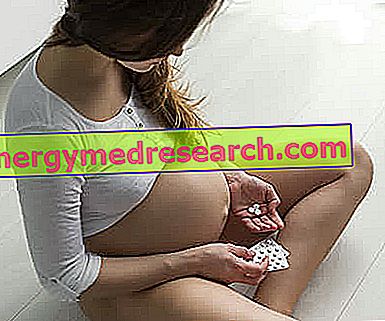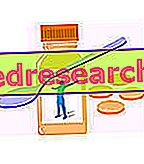Generality
Hair and breastfeeding are terms that, when placed next to each other, arouse not a few concerns in new mothers.

Estrogens and Hair
As mentioned, after the birth - during the breastfeeding phase - the hair becomes weak and fragile, with a tendency to fall and break easily.
Responsible for this phenomenon are estrogens, hormones that are particularly abundant during pregnancy and subject to rapid decline after childbirth, returning to pre-pregnancy levels during the breastfeeding phase.
Estrogens act on the life cycle of the hair prolonging the growth phase, called anagen. Under normal conditions, a percentage of hair normally varies between 85 and 90% is in a growth phase, while the remaining fraction rests (telogen phase). Once the rest period is over, the hair falls out and is immediately replaced by a new one. On average, a fall of about 100 hairs per day is considered normal.
According to what has been said, thanks to the estrogens secreted by the corpus luteum and the placenta, during the pregnancy the percentage of hair in growth phase increases, while the fall decreases. Conversely, in the lactation period the decline in estrogen levels causes a greater percentage of hair to enter the telogen phase. Consequently, the nurse can complain of an increase in the fall, generally more conspicuous in the case of long hair.
To tell the truth, in these cases - rather than hair loss during breastfeeding - it is more correct to speak of postpartum effluvium . In fact, the drop in estrogen that occurs at the end of pregnancy does not depend on the breastfeeding itself, but on the end of the gestation itself.
However, we commonly talk about hair loss during breastfeeding because this phenomenon occurs during this period.
deepening
From what has been said so far, it is not surprising that the duration of anagen can be increased pharmacologically by topical application of estrogens, in particular of estrone sulphate. Estrogens (ethinyl estradiol), together with antiandrogens (cyproterone acetate) are also used orally in the treatment of female androgenetic alopecia. All these drugs, however, are absolutely contraindicated during lactation, during which it is also advisable to avoid taking hair supplements, unless otherwise prescribed by a doctor.
Treatment
Since the phenomenon of hair loss during lactation occurs due to the return of estrogens to re-gravidic levels, it is considered to be entirely physiological and does not require any special interventions or treatments.
In fact, the fall stops spontaneously and the hair regains its pre-pregnancy appearance within 6-12 months.
In order not to excessively "stress" hair that is already in a state of fragility, it may still be useful to follow the following tips:
- Avoid using products that are too aggressive for hair washing.
- Avoid drying your hair at high temperatures.
- If possible, avoid using plates and hair irons, so as not to cause breakage.
- Avoid, as far as possible, ponytails or hairstyles that could stress the hair excessively.
- Adopt a healthy and balanced diet.
In some cases, however, the postpartum effluvium could manifest itself in severe form, thus becoming a cause of great concern.
In such cases, therefore, it is good to contact your doctor and dermatologist promptly, avoiding absolute self-diagnosis and do-it-yourself therapies, especially if you are breast-feeding.
The doctor will be able to identify the problem, indicating to each patient the most appropriate solution. If necessary, the specialist can prescribe the use of food supplements for hair well-being, also providing indications on the possible suspension of breastfeeding.



